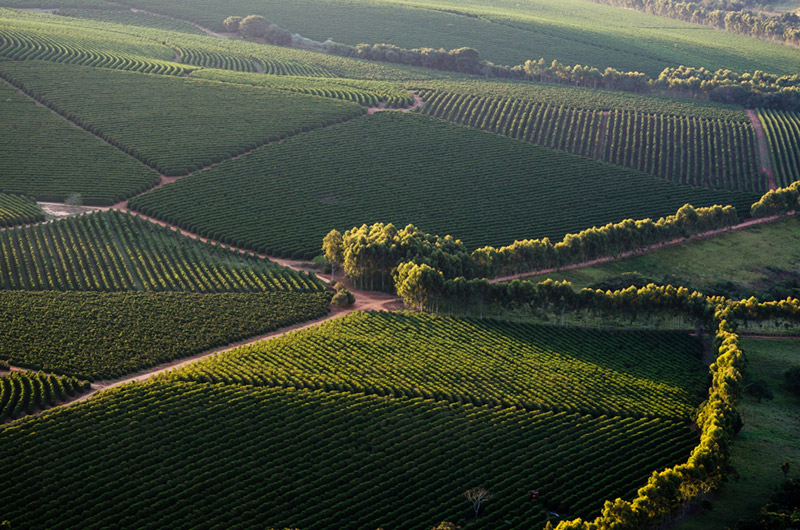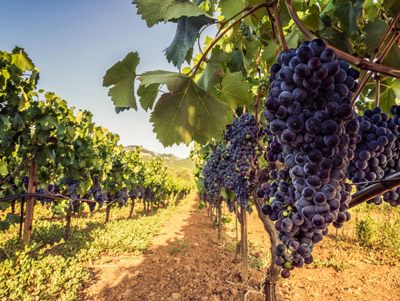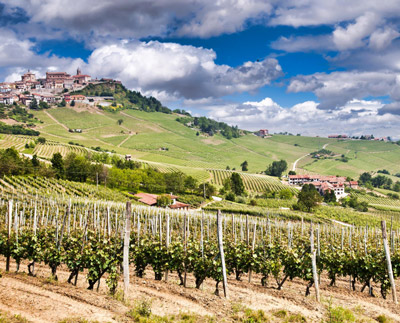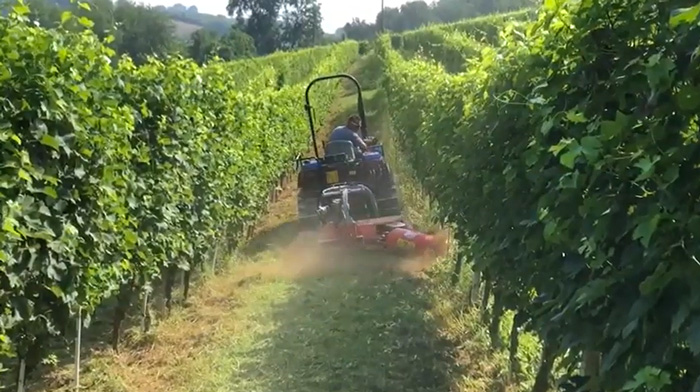-
Canopy Management
- » DF Pneumatic Leaf Remover
- » C-305 Independent Hydraulic Power Unit
- » CM-FF – Orchard Topper
- » CM-SF – Synchronized Bar Mower Topper
- » CM-SD – Synchronized Double Topping Machine
- » CM-SDT – Simple Synchronized Double Topping Machine
- » CM-SNU – Over-the-Row Topping Machine
- » CM-SNE – Electric and Hybrid Synchronized Topping Machine
- » CM-B – Basic Topping Machine
- » CM-SN New Model Synchronized Topping Machine
- » CM-S Synchronized Topping Machine
Plant vines: when the quality ofthe grapes is a matter of space

Lthe art of winemaking has gone through centuries of evolution, with theconstant aim to improve the quality of the wine.
At the center of this process, cis theestablishment of the vineyard, a crucial choice that defines not only theaesthetic appearance of a vineyard, but, above all, the basis for the production of quality grapes.
Lplant a vineyard, a well-planned takes into account various factors: the selection of the grapes, theexposure, the type of soil, and is of fundamental importance, the density of the system, i.e. the distance between the vines.
In this article we will explain how the density of the system has a direct influence on the quality of the grapes and, consequently, of the wine.
Cosis the density of planting a vineyard?
The planting density is defined as the number of vines per hectare in a vineyard. And determined in function of the type of production that the winemaker wants to get.
The density of the system is the product of two variables, formed by the distance between the rows and the distance between the strains.
Plant density and quality of the wine
A higher density of the system implies a smaller distance between the strains, a factor that results in many benefits for the quality of the wine.

Competition and radical depth of the roots
of A higher plant density generates a competition, radical, pushing the plant to develop a root system deeper.
This enhances theinteraction of roots with different layers of the soil, enriching the grapes with a wider range of minerals and organoleptic characteristics.
Limitation of the production of
The proximity between the strains limits the production for each plant. With fewer bunches per vine, theplant’s energy is concentrated on a small number of grapes, and improving their quality.
This results in a higher concentration of sugars, acids, and polyphenols, which are key elements for high-quality wines.
Microclimate optimized
A higher density can create an ideal micro-climate around the grape clusters.
The reduction ofdirect sunlight, for example, prevents burns and helps to ripen more slowly and evenly, which is essential for the development of complex aromas and structured.
Uniformity in ripening
With strains closer to each other, you get a greater homogeneity in the maturation of thegrapes. This aspect is crucial to ensure that all of thegrapes is at the right point of maturation at the time of the grape harvest.
The expression of the Terroir
For the terroir refers to the relationship that binds the vine to the micro-climate and characteristics of the soil of the soil in which it is cultivated, determines the character and uniqueness of the wine that is produced when compared to other areas.
The plant density can significantly affect lthe expression of the terroir in the wine. The deepest roots interact with different components of the soil, providing a reflection of the varied characteristics of the terroir.

(You might be interested in: Land ideal for the vineyard: what are the soils most suitable?)
Careful management of the screw
Lincrease in the density of the system requires management practices are more refined and often manual. This attention is reflected positively on the quality of the grapes.
The importance of density in theplant a vineyard,
Considering thethe importance of the density, it is essential to stress that there is no universal rule for the ideal density in a vineyard.
The decision depends on many factors, including grape variety, climate, terroir, and the methodologies wine.
In addition, an increase of density results in a cost of ownership and a collection of the more challenging aspects that need to be weighted carefully.
(You may be interested in: “Grass-growing in the vineyard: the choice of the plant species as a strategy to climate change”)
agricultural Machinery BFM for the management of high-density vineyards
Inthe context of the management of the high-density vineyards, the agricultural machinery interceppi BFM play a crucial role. They are designed to operate efficiently in the vineyards with a minimum distance between the strains of 40 cm.
The accuracy and theefficiency of agricultural machinery BFM allow for optimal care of the vines, preserving the quality ofthe grapes. Each process is executed with the utmost attention to ensure that each strain will contribute to a maximum of the quality of the wine produced.

Lawn mowers combined-with-contact – BFM Italy
(you May also be interested in: innovation BFM up with the change of cultivation techniques)
Conclusions
Lvineyard is much more than a simple procedure agricultural; it is anart that requires knowledge, experience and attention to detail.
The planting density is a key factor that, if managed properly, can lead to a significant elevation of the quality ofthe grapes and the wine.
In this intricate process, the technology and theinnovation, such as that offered by the agricultural machinery BFM, play an essential role, allowing the growers to maximize the potential of their terroir and their screws.
(You may be interested in: “Chopping vineyard: flail mower and a good ally for the fertilization of the soil”)

